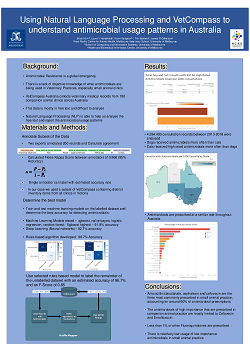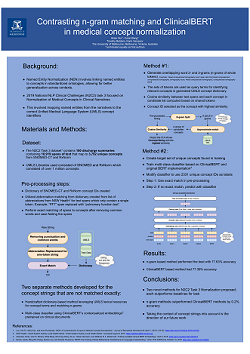Page Not Found
Page not found. Your pixels are in another canvas.
A list of all the posts and pages found on the site. For you robots out there is an XML version available for digesting as well.
Page not found. Your pixels are in another canvas.
About me
This is a page not in th emain menu
Published:
This post will show up by default. To disable scheduling of future posts, edit config.yml and set future: false.
Published:
This is a sample blog post. Lorem ipsum I can’t remember the rest of lorem ipsum and don’t have an internet connection right now. Testing testing testing this blog post. Blog posts are cool.
Published:
This is a sample blog post. Lorem ipsum I can’t remember the rest of lorem ipsum and don’t have an internet connection right now. Testing testing testing this blog post. Blog posts are cool.
Published:
This is a sample blog post. Lorem ipsum I can’t remember the rest of lorem ipsum and don’t have an internet connection right now. Testing testing testing this blog post. Blog posts are cool.
Published:
This is a sample blog post. Lorem ipsum I can’t remember the rest of lorem ipsum and don’t have an internet connection right now. Testing testing testing this blog post. Blog posts are cool.
Poster presented and awarded as best poster at CIS Doctoral Colloquim 2019, Australia Veterinary Conference 2019, and Australasia Computer Science Week 2020 
Poster from 2019 National NLP Clinical Challenge / Open Health NLP Shared Task and Workshop @ Association for Medical Informatics Association 
Published in Australian veterinary journal, 2019
In this paper we develop and test machine learning and rules-based methods in extracting antimicrobials used in clinical records stored within VetCompass from over 180 clinics accross Australia.
Recommended citation: Brian Hur, Laura Y. Hardefeldt, Karin Verspoor, Timothy Baldwin and James R Gilkerson (2019) Using Natural Language Processing and VetCompass to understand antimicrobial usage patterns in Australia, Australian Veterinary Journal 97(8), pp. 298—300. https://pubmed.ncbi.nlm.nih.gov/31209869/
Published in PLOS ONE, 2020
The aim of this study is to describe how frequently antimicrobials were used in veterinary consultations and identify the most frequently used antimicrobials.
Recommended citation: Hur, Brian A., Laura Y. Hardefeldt, Karin M. Verspoor, Timothy Baldwin, and James R Gilkerson (2020) Describing the Antimicrobial Usage Patterns of Companion Animal Veterinary Practices; Free Text Analysis of more than 4.4 Million Consultation Records, PLoS ONE 15(3): e0230049. https://doi.org/10.1371/journal.pone.0230049
Published in 19th SIGBioMed Workshop on Biomedical Language Processing (BioNLP 2020) @ ACL 2020, 2020
We propose a document classification approach to determine the reason for administration of a given drug, with particular focus on domain adaptation from one drug to another, and instance selection to minimize annotation effort.
Recommended citation: Hur, Brian, Timothy Baldwin, Karin Verspoor, Laura Hardefeldt and James Gilkerson (2020) Domain Adaptation and Instance Selection for Disease Syndrome Classification over Veterinary Clinical Notes, In Proceedings of the 19th SIGBioMed Workshop on Biomedical Language Processing (BioNLP 2020), pp. 156—166. https://www.aclweb.org/anthology/2020.bionlp-1.17/
Published in Veterinary Record, 2020
The authors describe the common indications for cefovecin use in dogs and cats, and the frequency of culture and susceptibility testing
Recommended citation: Hardefeldt, Laura Y, Brian Hur, Karin Verspoor, Timothy Baldwin, Kirsten E Bailey, Riata Scarborough, Suzanna Richards, Helen Bilman-Jacobe, Glenn F Browning and James R Gilkerson (2020) Use of cefovecin in dogs and cats attending first-opinion veterinary practices in Australia, Veterinary Record. https://pubmed.ncbi.nlm.nih.gov/32826347/
Published in Traitement Automatique des Langues, 2021
We present a rule-based multipass sieve approach incorporating both exact and approximate matching based on dictionaries, and experiment with back-translation as a means of data augmentation.
Recommended citation: Wang, Yuxia, Brian Hur, Karin Verspoor and Timothy Baldwin (2021) A Multi-pass Sieve for Clinical Concept Normalization, Traitement Automatique des Langues 2020 Volume 61 Numéro 2. https://www.atala.org/sites/default/files/TAL-61-2-2_Wang.pdf
Published in JAC Antimicrobial Resistance, 2022
Automated extraction using NLP methods is a powerful tool to evaluate large datasets and to enable veterinarians to describe the reasons that antimicrobials are administered. However, this can only be determined when the data presented in the clinical record are complete, which was not the case in most instances in this dataset. Most importantly, the dose administered varied and was often not consistent with guideline recommendations.
Recommended citation: Brian Hur, Laura Y. Hardefeldt, Karin M. Verspoor, Timothy Baldwin, James R. Gilkerson, Evaluating the dose, indication and agreement with guidelines of antimicrobial use in companion animal practice with natural language processing, JAC-Antimicrobial Resistance, Volume 4, Issue 1, February 2022, dlab194, https://doi.org/10.1093/jacamr/dlab194 https://academic.oup.com/jacamr/article/4/1/dlab194/6525464
Published:
This talk discussed the findings from our preliminary study on extracting antimicrobials from VetCompass and its application to Antimicrobial Stewardship Programs being implemented in veterinary clinics accross Australia.
Published:
This was a presentation of our paper describing our methods of using instance selection and developing VetBERT to minimize the amount of labels required to train a model to classify the reason for an antimicrobial administration.
Published:
This talk discussed our work with VetCompass Australia in extracting medications and the reason for administration from clinical records. Our work demonstrates an end to end approach using artificial intelligence to understand the reason for giving these drugs out of raw clinical text on a population level. This is done through a combination of big data, rules-based algorithms and novel deep learning models.
Published:
This talk discussed the previuous studies focused on evaluating what can reasonably be extracted out of a clinical record. We found that fewer than 40% of the records have all the data necessary to evaluate whether or not an antimicrobial was given appropriately. Novel neural networks might be able to overcome the difficulties of harvesting free text data from clinical records, but when the essential data is not recorded in the clinic records then the human barrier becomes the insurmountable obstacle.
Undergraduate Course, University of Melbourne, Computing and Information Systems, 2019
Ran labs and guided students through Foundations of Computing where we covered pogramming constructs; fundamental data structures; abstraction; basic program structures; algorithmic problem solving, testing and debugging.
Graduate course, Melbourne Business School, 2019
Gave lectures, ran labs and guided students to build their models and algorithms for students of the Masters of Business Anlaytics course at the Melbourne Business school. This course was an adapted version of the Web Search and Text Anlysis course.